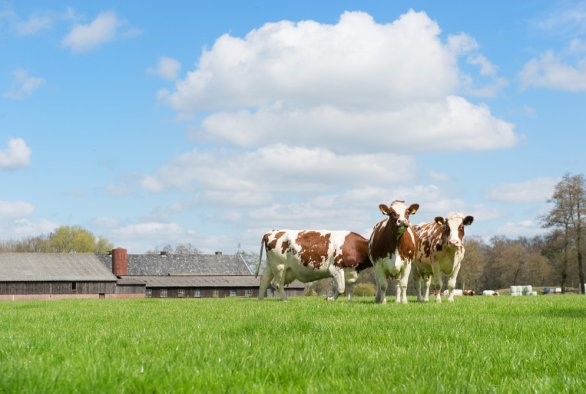Dairy farmers can focus on taking measures that help carbon sequestration, such as maximizing carbon supply from manure and crop residues.
September 10, 2020

Researchers at Wageningen University & Research (WUR) in the Netherlands partnered with FrieslandCampina to develop a monitoring system that keeps track of the soil carbon sequestration on dairy farms.
WUR said the resulting insights could help dairy farmers see how soil carbon sequestration affects their carbon footprint.
For dairy farmers, an increase in soil organic matter could lead to improved soil carbon sequestration and, thus, a lower carbon footprint, WUR said. Roughly half of all organic matter is made of carbon. To determine the carbon sequestration (soil carbon) amount, measurements must be taken.
“Accurately measuring soil carbon is difficult. The topsoil can store approximately 50-100 metric tons of carbon per hectare, but it’s not always distributed evenly across the plot,” Jan Peter Lesschen, WUR senior researcher who leads the soil and climate project, said, adding that dairy farmers in the Netherlands currently take plot samples once every four years. "A carbon sequestration of 0.5 mt represents a virtually insignificant change in this stock (0.5-1.0%), which is often less than the accuracy with which the soil is analyzed. Geographical and weather factors also impact the degree of carbon sequestration, such as differences in altitude, the presence of peat layers and the effects of temperature and moisture.”
Monitoring system
An alternative is to use scientific models to calculate soil carbon, but there are differences per farm here, too -- for example, because of the difficulty in estimating the amount of carbon generated by crop residue.
Lesschen and his colleagues at Wageningen Environmental Research and Wageningen Livestock Research developed a monitoring system that is accurate enough to generate a reliable result for multiple plots and farms, WUR said. The current approach undertaken by the 33 participating companies contributes to a 2% reduction in carbon dioxide emissions on average, with no active management of carbon sequestration. The researchers propose supplementing the models with additional field measurements taken over several years, combined with annual soil samples, WUR said.
Fine-tuning the scientific model
“We want to take frequent soil carbon measurements on a large number of plots,” Lesschen said. “We also want to centrally document activities such as fertilization, grassland renewal and crop rotation on these plots. As more measurement data becomes available, we can fine-tune our scientific model and make more accurate calculations for individual plots.”
In the meantime, dairy farmers can focus on taking measures that have been proven to help carbon sequestration, such as minimizing grassland renewal and maximizing the supply of carbon from manure and crop residues.
The report, "Possibilities for Monitoring CO2 Sequestration & Decomposition of Soil Organic Matter on Dairy Farms," is available online.
You May Also Like


.png?width=300&auto=webp&quality=80&disable=upscale)
